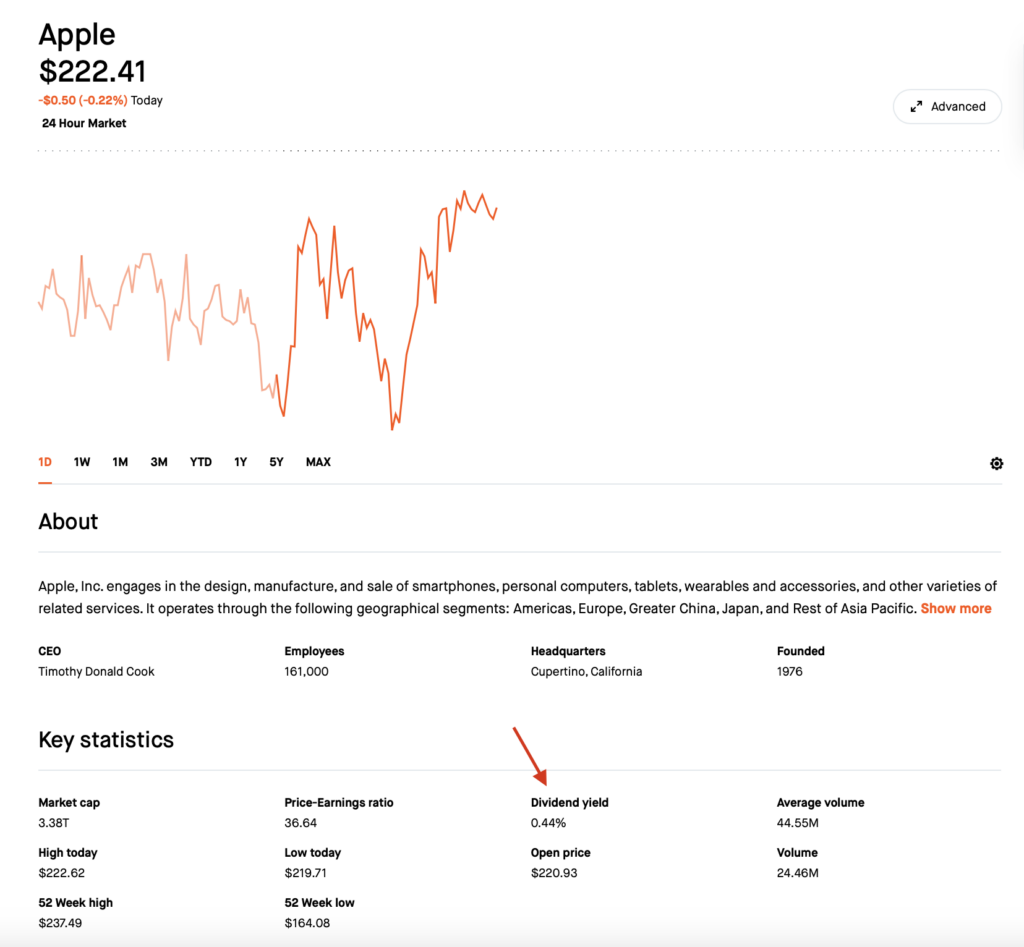How to read a stock quote page: Learn the basics

At one point or another, you’ve probably seen a stock’s ticker run across the bottom of a TV screen or noticed share prices flashing across the top of a news website. Perhaps you’ve even looked at a stock’s quote page. But what do the various terms and numbers shown there indicate?
A quote page displays more than just the price of a stock — in fact, it can tell investors about company performance, market demand and even investor sentiment.
Here’s how to read a stock quote page and what each element means.
How to read a stock quote page
First, let’s take a few steps back and understand what a stock actually represents. When you own a share of a stock, you have partial ownership of the company. Companies issue shares when they need to raise more money to grow. Because of this, a stock not only represents the current value of the business, but also what the company could be worth down the line.
Stocks are usually part of an investor’s broader portfolio, which is a collection of investments, including bonds and other assets.
Let’s look at what each element of a stock quote page indicates and how it can help you decide whether to invest in a company.
Ticker symbol
The ticker symbol is a set of letters assigned to the company that help identify the stock. It’s usually two to four letters and often reflects the company’s name, which you’ll usually find placed above the ticker symbol. For example, Apple’s ticker is AAPL.
Quoted price
The quoted price is the number that appears underneath the ticker symbol and represents the last traded price that someone paid for the stock. In other words, it’s a quick snapshot of the stock’s current market value.
Open
The opening price represents the first trade price recorded for that market day. Investors usually compare the opening price to the current price or closing price to determine how much it has increased or decreased throughout the day.
Close
The closing price is the last price the stock traded for in the previous trading session. Both opening and closing prices are almost always included at the bottom of the stock quote page no matter what investment platform you’re using.
Bid and ask
The bid price is the highest price a buyer is willing to pay for the stock. The ask price is the lowest price a seller is willing to accept. These numbers are usually displayed somewhere near the quoted price, or at the bottom of the stock quote page near other important information and financial ratios.
Bid-ask spread
This number is the difference between the bid price and the ask, showing investors a snapshot of demand and how liquid the stock is. A narrow spread typically indicates greater liquidity, while a wider spread suggests the opposite. Some platforms show this number, while others do not. To calculate it yourself, take the ask price and subtract the bid price.
Market capitalization
The market capitalization of a company is the total value of the company’s stock. Investors can use this to help determine whether a stock is considered a risky or safe investment.
For example, companies with large market caps are generally considered more stable, with less room for growth in their returns. These businesses might be a more attractive choice for someone who has a low risk tolerance. Market cap is calculated by multiplying the current stock price by the total number of outstanding shares.
Volume
Volume refers to the number of shares that have been traded during the day. It’s a good indication of how much interest a stock has. Higher volume means that more trades have occurred, and lower volume indicates less frequent trading activity. If you’re using a Robinhood account, for example, volume is located in the section labeled “Key statistics,” though most brokerage accounts also include this data.
Other elements within a stock quote page
There are a few additional elements of a stock quote page that you might run into, all of which can help you determine whether to buy or sell the stock.
Price ranges
These ranges give investors a sense of the stock’s volatility and price changes over time. The 52-week range shows how the price has moved over the past year, while the daily shows the range for a single day. The former is usually displayed as the “52-week low” and “52-week high.” For daily ranges, they’ll likely be labeled “daily range” or “daily high/low,” though you may see other variations of this.
Price-to-earnings ratio
You’ll often see the price-to-earnings (P/E) ratio near the bottom of the stock quote page, along with a few other financial ratios. Investors can calculate the P/E themselves by taking the company’s current stock price and dividing it by its most recent trailing-12-month earnings per share. The P/E ratio is one of the most well-known metrics used to gauge whether a stock is trading high or low compared to other stocks.
Note that a high P/E typically signals that investors have high expectations for future growth, while a low P/E represents either low growth expectations, or a potential bargain.
Other financial ratios and information
Other financial ratios may also be available for research purposes, including:
- Dividend yield, which is a ratio that shows the annual dividend payment as a percent of the stock’s price.
- Dividend rate, which represents the total annual dividend payout per share.
- Ex-dividend date, which shows the date by which an investor must own the stock to receive the upcoming dividend payment.

Image source: Robinhood
Again, the availability of this data depends on what brokerage or website you’re using and what level of membership you have. Sites like Yahoo Finance give you access to many of the above data points for free.
How to decide whether to buy a stock
Once you understand how to read a stock quote page, the next step is to decide whether to buy the stock. Every investor’s individual goals, timeline and risk tolerance will be different, so take time to consider what your goals are. Are you investing to pay for retirement? Or are you trying to meet a more short-term goal?
Many long-term investors use a process called fundamental analysis to determine a stock’s true value by taking into account things like revenue, earnings, profit margin and what’s going on in the broader economy. Most of the information found within a stock quote page can help you conduct fundamental analysis on your own (think P/E ratio and market cap).
If you still find yourself wondering whether stocks are a good investment for you, consider meeting with a financial advisor. They can sit down with you and help you determine what your long-term goals are.
Bottom line
Every investor has different goals, but understanding how to read a stock quote page is an essential part of investing. A stock quote page not only tells you the current value of the company, but also what the business could be worth down the line.
Editorial Disclaimer: All investors are advised to conduct their own independent research into investment strategies before making an investment decision. In addition, investors are advised that past investment product performance is no guarantee of future price appreciation.






